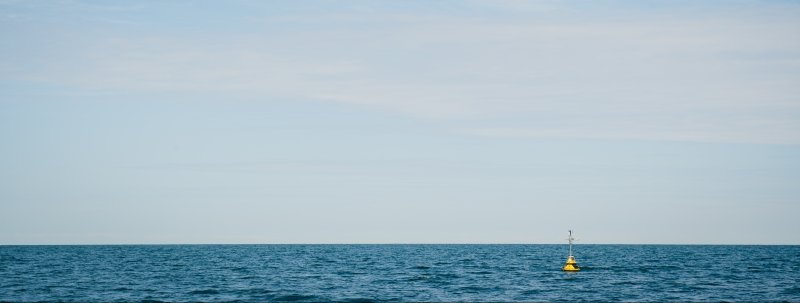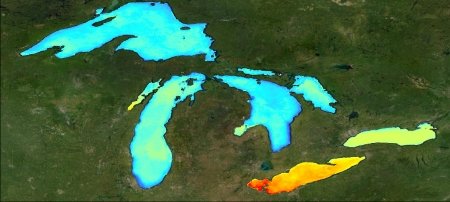Modeling currents together with wind and waves provides more accurate predictions for weather forecasts and climate scientists.
As hurricanes grow in power as the climate changes, accurately modeling the interactions between the atmosphere and the ocean grows increasingly important to prepare people to batten down or to evacuate. The many mechanisms of the atmosphere-ocean system — known as air-sea flux — make modeling extremely complicated, however.
Why model?
Numerical models solve equations that describe the atmosphere, ocean, and land surface to predict future weather and climate. Interactions among each model component, such as heat exchange between atmosphere and ocean, play an important role in driving both oceanic and atmospheric circulation.
Qi Shi, a postdoctoral researcher in the Great Lakes Research Center at Michigan Technological University, has created the first detailed analysis of ocean and atmospheric responses to currents, waves and wind. In the article “Coupling Ocean Currents and Waves with Wind Stress over the Gulf Stream” published in Remote Sensing this summer, Shi argues that current numerical models simply don’t account for the impact of waves, currents and wind coupled together. This coupling is crucial because without it, models do not accurately represent marine atmospheric boundary layer processes.
“We quantified the impact of this coupling to improve the accuracy of air-sea fluxes,
because without modeling currents, there is a constant bias in models,” Shi said.
“What causes that bias? Missing the full spectrum of feedback mechanisms.”
Simply put: Better modeling gives weather forecasters and climate scientists a more
accurate picture of what happens where atmosphere and ocean meet.
Part of what makes modeling air-sea flux so complicated are the sheer number of feedback mechanisms in the system: To model waves, one must account for surface roughness and wind; to model sea surface temperature, one must account for air-sea temperature differences, water vapor, humidity, evaporation and more. Modeling wind and surface currents are equally complex.
Hurricanes and Climate
Hurricanes are fueled with heat and moisture from the ocean. Ocean currents and waves modify wind shear and surface roughness, which are key variables for calculating the air-sea heat and momentum fluxes. Using a high-resolution, three-way coupled ocean-wave-atmospheric modeling system, Shi determined the role of coupling ocean currents, waves and wind stress in reducing model bias in air-sea flux over the Gulf Stream.
Shi’s work is the first detailed mechanism study in the current-wave-stress coupling process, which can be applied to increase the accuracy of forecasts for hurricane intensity and climate prediction as well as to better use satellite observations in the numerical models.
“We provide evidence that observation of currents is important and has significant influence on models,” Shi said.
Shi said she hopes to see the eventual launch of a satellite that observes ocean currents to validate ground observations.
Michigan Technological University is an R1 public research university founded in 1885 in Houghton, and is home to nearly 7,500 students from more than 60 countries around the world. Consistently ranked among the best universities in the country for return on investment, Michigan's flagship technological university offers more than 120 undergraduate and graduate degree programs in science and technology, engineering, computing, forestry, business, health professions, humanities, mathematics, social sciences, and the arts. The rural campus is situated just miles from Lake Superior in Michigan's Upper Peninsula, offering year-round opportunities for outdoor adventure.






Comments